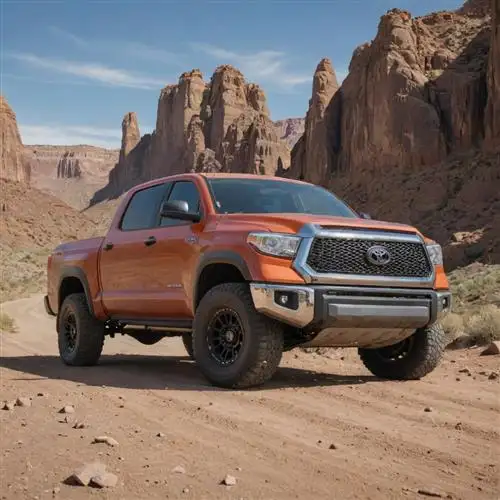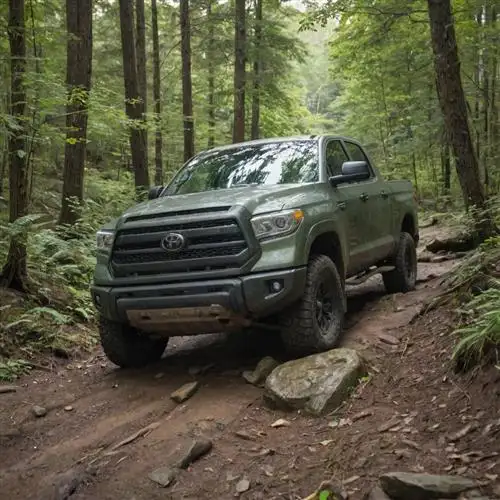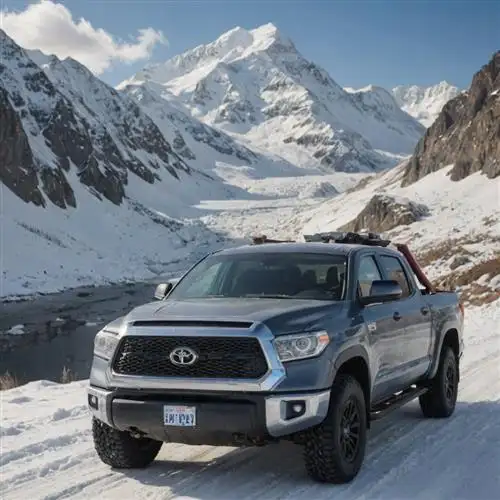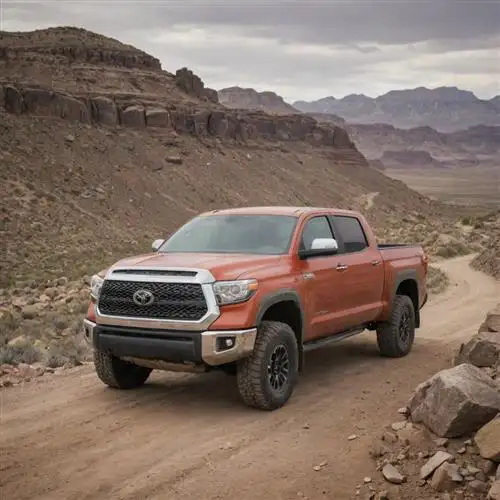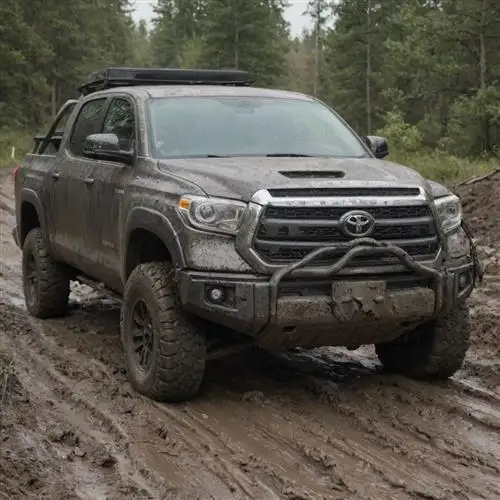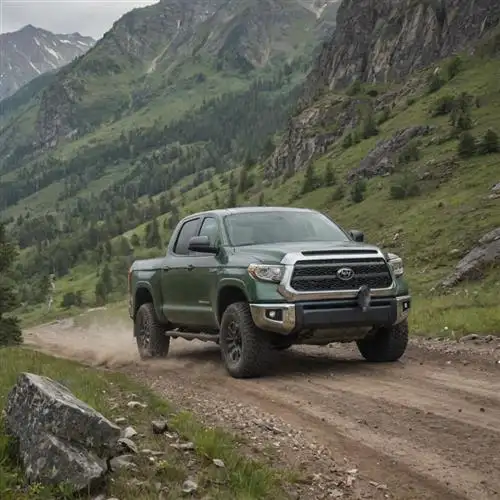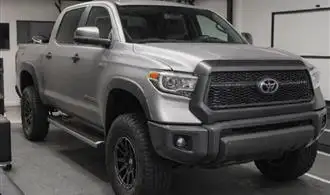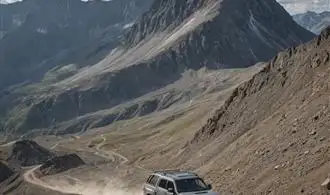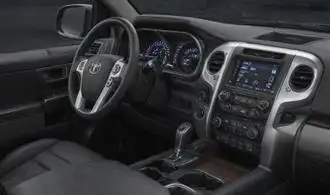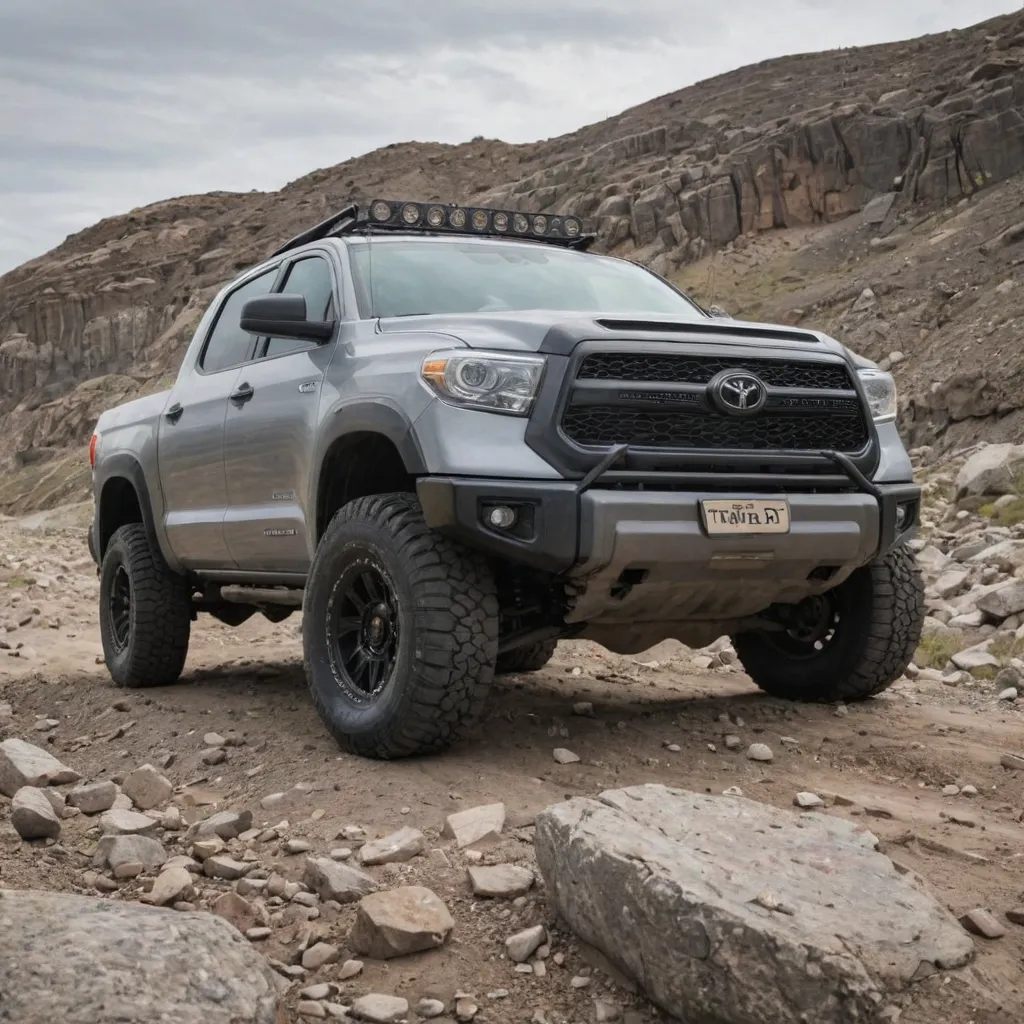
Essential Tire Selection for Tundra Off-roading
Selecting the right tires is crucial for Toyota Tundra owners who venture off-road. Expert off-road enthusiasts understand the importance of balancing on-road performance with exceptional off-road capabilities. When it comes to off-road tires for your Tundra, there are several key factors to consider to ensure you make the best choice.
Tire Size and Fit: The first and foremost consideration is ensuring the tires you choose fit your Tundra properly. It's essential to select a tire size that provides the necessary clearance and does not rub against the fenders or suspension components, even when the vehicle is fully loaded or articulated. Oversized tires can negatively impact fuel efficiency, handling, and braking performance, so it's crucial to find the right balance.
Tread Pattern and Compound: Off-road tires are designed with specific tread patterns and compounds to excel in various terrain. Look for tires with deep, aggressive tread blocks that can bite into soft surfaces like sand, mud, or rocks. The tire compound should also be durable and resistant to punctures, while still providing a smooth and comfortable ride on the road.
Load Rating and Sidewall Strength: When choosing off-road tires for your Tundra, pay close attention to the load rating and sidewall strength. These factors will determine the tire's ability to support the weight of your vehicle and withstand the rigors of off-road driving. Heavier-duty tires with higher load ratings and reinforced sidewalls are generally better suited for off-road use.
Tire Durability and Puncture Resistance: Off-road driving can be tough on tires, so it's essential to select models that are designed to withstand the abuse. Look for tires with features like reinforced sidewalls, puncture-resistant casings, and self-sealing technology to minimize the risk of flats and improve overall durability.
Tire Noise and On-road Performance: While off-road performance is the primary focus, it's also important to consider the on-road behavior of the tires you choose. Opt for tires that provide a comfortable, quiet ride and maintain good handling and braking characteristics on the highway, as your Tundra will likely spend a significant amount of time on the road.
Suspension Upgrades for Optimal Off-road Performance
For Toyota Tundra enthusiasts who take their trucks off-road, upgrading the suspension is crucial for achieving optimal performance and a smooth, comfortable ride. Expert off-road enthusiasts know that the right suspension modifications can transform the Tundra's capabilities, allowing it to tackle even the most challenging terrains with ease. In this section, we'll dive into the key suspension upgrades that can take your Tundra's off-road prowess to new heights.
Lift Kits: A quality lift kit is often the first step in enhancing the Tundra's off-road capabilities. Experienced enthusiasts recommend researching and investing in a reputable lift kit that provides the right balance of increased ground clearance and ride quality. Kits that incorporate heavy-duty components, such as reinforced control arms and high-performance shocks, are particularly desirable for those who plan to subject their Tundra to rigorous off-road conditions.
Shock Absorbers: Upgrading the Tundra's shock absorbers is a crucial component of any suspension overhaul. Expert enthusiasts favor heavy-duty, adjustable shocks that can withstand the demands of off-road driving. Look for shocks that offer the ability to fine-tune compression and rebound settings, allowing you to dial in the perfect balance of comfort and control for your specific driving needs.
Coilovers: For those seeking a more sophisticated suspension solution, coilovers are a popular choice among expert off-road enthusiasts. Coilovers provide a comprehensive suspension system that combines adjustable spring rates, damping, and ride height, enabling you to fine-tune the Tundra's handling and performance for various terrain conditions.
Sway Bars: Upgrading the Tundra's sway bars can significantly improve its stability and handling, both on-road and off-road. Expert enthusiasts recommend installing heavy-duty sway bars that can effectively counteract body roll and improve the truck's overall responsiveness, especially when navigating challenging terrain or tight turns.
Navigational Tools for Tundra Off-road Exploration
Navigating the rugged terrain of the great outdoors in your Toyota Tundra requires more than just a keen eye and a sense of adventure. Expert off-road enthusiasts rely on a suite of specialized tools and technologies to ensure a safe and successful journey. One of the most crucial components of this arsenal is a reliable and comprehensive navigation system.
Global Positioning System (GPS) devices have become an indispensable tool for off-road explorers. These high-precision navigational aids not only pinpoint your exact location but also provide detailed maps of the surrounding terrain, allowing you to plan your route and identify potential obstacles or hazards. Many modern GPS units even offer features like real-time tracking, alternative route suggestions, and integration with mobile apps for a seamless navigation experience.
In addition to GPS, experienced Tundra off-road enthusiasts often utilize digital mapping software and applications. These tools offer detailed topographical information, satellite imagery, and user-generated data on trail conditions, camp sites, and points of interest. By leveraging these digital resources, you can make informed decisions about your route, anticipate changes in terrain, and ensure your safety throughout the journey.
Another essential navigational tool is a reliable compass. While GPS and digital mapping provide valuable information, a compass remains a fundamental tool for orienting yourself and maintaining a sense of direction, especially in areas with limited cell signal or power sources. Expert off-road enthusiasts often carry multiple compasses, including both magnetic and electronic models, to ensure redundancy and reliability.
Tundra Modifications for Increased Ground Clearance
When it comes to off-road adventures, the Toyota Tundra's ground clearance can make all the difference. Expert Toyota Tundra enthusiasts have mastered the art of modifying their trucks to conquer even the toughest terrain. One of the key areas of focus is increasing the ground clearance, which allows the Tundra to tackle steeper inclines, navigate deeper water crossings, and navigate over larger obstacles with ease.
One of the most common and effective modifications for increasing ground clearance is the installation of a lift kit. Lift kits typically raise the suspension of the Tundra, providing additional clearance between the undercarriage and the ground. These kits come in a variety of sizes, ranging from a modest 2-inch lift to more substantial 6-inch or even 8-inch lifts. Expert Tundra enthusiasts often choose a lift kit that complements the intended use of their vehicle, balancing increased clearance with handling and stability.
Another popular modification is the replacement of the Tundra's stock tires with larger, more off-road-focused tires. Oversized tires not only provide a more aggressive appearance but also contribute to increased ground clearance. Expert enthusiasts often choose tires with a taller sidewall, which effectively raises the overall height of the vehicle. Additionally, these tires are designed with deeper treads and more robust construction to handle the demands of off-road terrain.
In addition to lift kits and larger tires, expert Toyota Tundra enthusiasts may also consider other modifications to further enhance their vehicle's ground clearance. These can include:
- Replacement of the stock suspension components with aftermarket shock absorbers and springs, designed to provide a more robust and adjustable suspension system.
- Installation of skid plates or underbody protection to shield the Tundra's vulnerable components from the rigors of off-road driving.
- Relocation of the exhaust system to a higher position, ensuring it remains clear of obstacles during off-road excursions.
Recovery Gear Essentials for Tundra Off-road Adventures
When venturing off-road with your Toyota Tundra, having the right recovery gear can make the difference between a successful adventure and a frustrating ordeal. Expert Tundra enthusiasts know that being prepared with the proper equipment can not only get you unstuck but also keep you and your vehicle safe in unexpected situations. Let's explore the essential recovery gear you should consider for your Tundra off-road excursions.
Tow Strap or Recovery Strap: A high-quality tow strap or recovery strap is a must-have. These sturdy, reinforced straps are designed to withstand the immense forces involved in extracting a vehicle from a tough situation. Look for straps with a minimum breaking strength of 20,000 pounds to ensure safety and reliability.
Shackles: Sturdy, high-grade shackles are essential for connecting your tow strap or recovery strap to the vehicle's recovery points. Opt for shackles with a working load limit (WLL) of at least 4.75 tons to handle the demands of off-road recovery.
Recovery Boards or Traction Mats: When your Tundra is stuck in soft sand, mud, or snow, recovery boards or traction mats can provide the extra grip needed to get you back on the trail. These ingenious devices distribute the weight of your vehicle, allowing you to drive out of the difficult terrain.
Winch: A heavy-duty winch mounted on the front of your Tundra can be a game-changer in recovery situations. Look for a winch with a pulling capacity that exceeds the weight of your fully loaded vehicle. Ensure the winch is properly installed and that you understand its safe operation.
Snatch Strap: Also known as a kinetic recovery strap, a snatch strap can provide the extra momentum needed to extract a stuck vehicle. Unlike a traditional tow strap, a snatch strap is designed to stretch and release energy, gently pulling the vehicle free.
Tire Deflator and Inflator: Adjusting your Tundra's tire pressure can significantly improve traction in challenging off-road conditions. A tire deflator allows you to lower the pressure quickly, while an inflator helps you restore the recommended pressure once you're back on firm ground.
Emergency Kit: While not directly related to recovery gear, a well-stocked emergency kit is essential for off-road adventures. Include items such as a first-aid kit, fire extinguisher, flashlight, and tools to handle minor repairs or unexpected situations.
Optimal Driving Techniques for Tundra Off-road Maneuvers
Navigating the rugged terrain with a Toyota Tundra requires a specific set of driving techniques to ensure a smooth and efficient off-road experience. Expert Tundra enthusiasts have honed their skills over years of exploration, and their insights can be invaluable for those seeking to push the boundaries of their truck's capabilities.
One of the key aspects of off-road driving with the Tundra is proper weight distribution. Maintaining an even balance of weight across the vehicle is crucial for maintaining traction and stability, especially when traversing uneven surfaces or steep inclines. Expert drivers recommend adjusting the load in the truck bed and ensuring that heavier items are positioned closer to the center of the vehicle.
Throttle control is another critical element of successful off-road maneuvers. Smooth and measured acceleration is essential for maintaining control, particularly in challenging terrain. Avoid sudden inputs or rapid changes in throttle, as this can lead to wheel spin, loss of traction, and potentially hazardous situations. Instead, focus on gentle, progressive throttle application to keep the Tundra's wheels firmly planted on the ground.
Steering input is also a vital consideration when navigating off-road. Experts suggest a light, responsive touch on the steering wheel, allowing the Tundra to respond naturally to changes in terrain and direction. Oversteering or making abrupt turns can compromise the vehicle's stability and lead to unpredictable behavior, so it's essential to maintain a smooth and controlled steering technique.
Awareness of the Tundra's ground clearance is another crucial factor in off-road driving. Expert enthusiasts know the importance of identifying obstacles and adjusting their approach accordingly. This may involve choosing alternative routes, carefully positioning the wheels, or even using the Tundra's impressive approach and departure angles to navigate over challenging obstacles.
Protecting Your Tundra's Undercarriage on Rough Terrain
Navigating the great outdoors in your Toyota Tundra can be an exhilarating experience, but it also comes with the risk of potential damage to your vehicle's undercarriage. The undercarriage is the vulnerable underbelly of your truck, housing crucial components like the suspension, steering, and drivetrain. When traversing rugged off-road terrain, it's essential to take proactive measures to safeguard this vital area.
One of the primary concerns is the risk of snagging or scraping the undercarriage on rocks, stumps, or other obstacles. This can lead to dents, cracks, or even punctures, compromising the structural integrity and functionality of your Tundra. To mitigate this risk, consider installing skid plates or rock sliders. Skid plates are heavy-duty shields that protect the underside of your vehicle, while rock sliders act as barriers to prevent direct contact between the undercarriage and the ground.
Another important factor to consider is ground clearance. The higher your Tundra's clearance, the better it will navigate over uneven terrain without scraping the undercarriage. Upgrading your suspension with lift kits or larger tires can significantly improve your ground clearance, allowing you to tackle more challenging off-road obstacles with confidence.
It's also crucial to maintain proper tire inflation when venturing off-road. Lowering your tire pressure can help your Tundra's tires conform to the terrain, reducing the likelihood of the undercarriage making contact with the ground. However, be sure to return to the recommended tire pressure before driving on paved roads to avoid compromising handling and fuel efficiency.
Additionally, pay close attention to the terrain you're navigating. Avoid steep descents or sharp inclines that could cause your Tundra's undercarriage to scrape against the ground. If you encounter a particularly challenging obstacle, consider finding an alternate route or using a spotting partner to guide you through safely.
Regular inspections and maintenance of your Tundra's undercarriage are also essential. Closely examine the area for any signs of damage, such as dents, cracks, or loose components. Address any issues promptly to prevent further deterioration and ensure the long-term health of your off-road companion.

